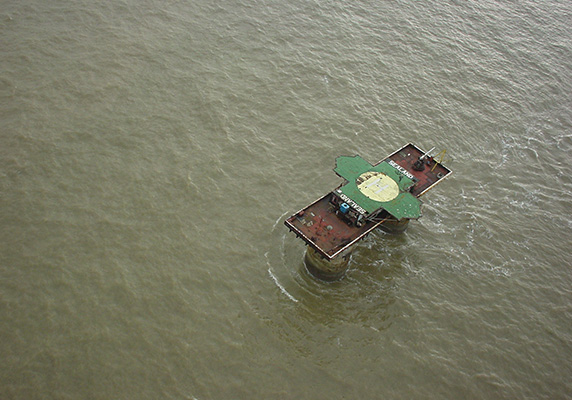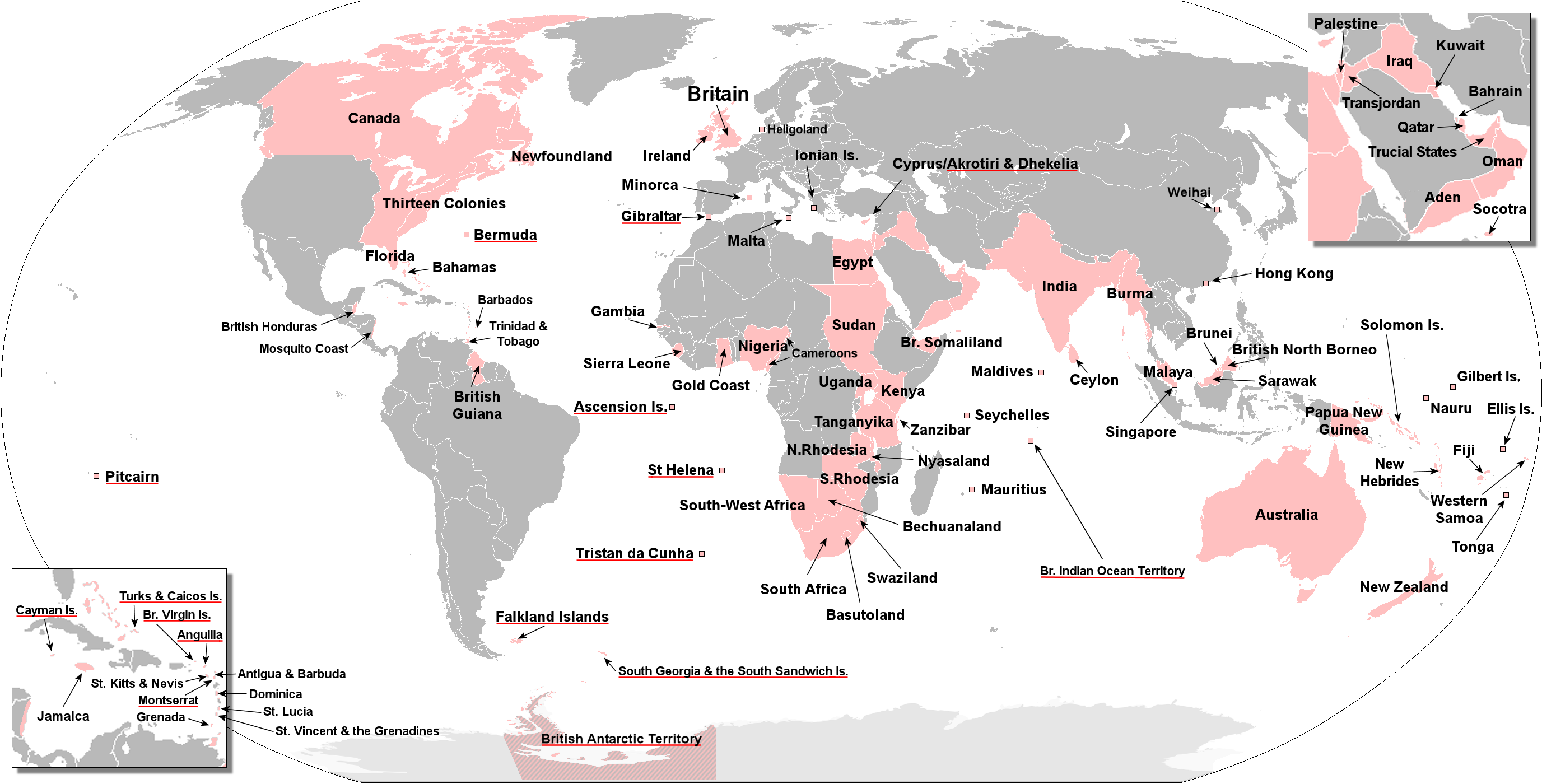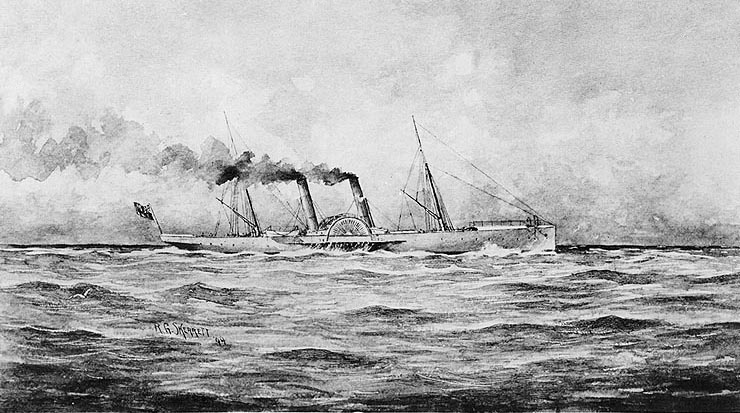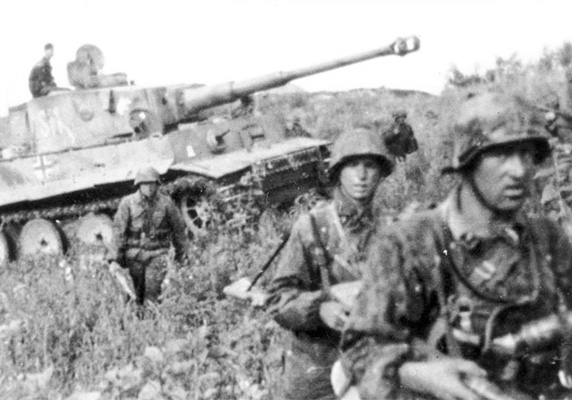In this week’s blog post, we’re looking at some of the Guinness World Records surrounding World War II. You can read about acclaimed animals, new technology, massive battles, and curious claims.
World of Tanks
Record: Most players online simultaneously on one MOG server
It wouldn’t quite be a list if we didn’t include one of World of Tanks’ very own Guinness World Record. On January 21st, 2013, we set a record for “Most Players Online Simultaneously on one MOG Server” when we hit 190,541 players on the RU2 server (Russia). The previous record for this category, which also belonged to World of Tanks, was established on January 23, 2011, when we hit 91,311 players less than half of the new record!
Roughs Tower
Record: Smallest area to lay claim to nation status
Though this record was set over 20 years after the Second World War, we still say this counts, because the original structure “Roughs Tower” was built by the British Government during the conflict. It stands (or floats) on the High Seas 11 km (7 miles) off the east coast of the United Kingdom. At the time, it served as a base for radar, heavy armament and close to 200 service personnel, who guarded against those approaching the Thames Estuary.
Sealand from above. By Ryan Lackey (originally posted to Flickr as sealand-sky)

After the war, the landing pad remained abandoned for some time. In 1966, a British family lay claim to Roughs Tower and declared it the Principality (or Duchy) of Sealand. The family then spent many years in a legal battle to have their claim recognized. They even had their own constitution, flag, national anthem, currency—the Sealand dollar—and passports (by 1975, 106 people possessed “citizenship of Sealand”).
Murphy the Donkey
Record: Bravest donkey
Over fifty years after the end of World War II, Murphy, an Australian Army donkey, received a posthumous award: RSPCA Australia Purple Cross. This award for animal bravery, bestowed at the Australian War Memorial, was on behalf of all donkeys that had served in the 1915–16 Gallipoli campaign.
It was Murphy’s (and many donkey’s) job to carry the wounded away from the frontline, along an expanse of rocky gullies to field hospitals, during the abortive offensive in the Dardanelles in 1915–16. There is no a statue of Murphy at the Australian War Memorial.
The British Empire
Record: Largest empire by population
When World War I commenced, there were around 88 million people in the British Empire. As more territories were added after the war, the number grew to 458 million. The population peaked in 1938, and by the start of World War II, there was over 531 million people. This made the British Empire the largest in history.
All areas of the world that were ever part of the British Empire. The Twentieth Century, The Oxford History of the British Empire Volume IV.

Casablanca Class
Record: Most numerous class of aircraft carrier
During 1942 to 1945, the Casablanca class of escort carriers were constructed by the U.S. Navy. In total, 50 were constructed, measuring at 156.1 m long with a beam of 19.9 m and a displacement of 10,902 tonnes, fully loaded. Only five Casablancas were lost in action during the war, and the rest were eventually scrapped.
Lin Wang, the Elephant
Record: Oldest elephant
Though Lin Wang lived to the ripe old age of 86, during World War II, he carried supplies through the jungles of Myanmar (once known of Burma) for the Japanese Army. The elephant was even taken prisoner by the Chinese in 1943. His later life was somewhat more peaceful, where he retired to Taipei Zoo, Taiwan.
A Watery Grave
Record: Deepest shipwreck
The SS Rio Grande was discovered on November 28, 1996, at the bottom of the South Atlantic Ocean. It was later confirmed to be a World War II German blockade runner, now lying at a depth of 5,762 m (18,904 ft).
A blockade runner example: SS Banshee, 1863. U.S. Naval Historical Center Photograph

Night Vision
Record: Fire use of infrared equipment in battle
In World War II, electric sniperscopes were mounted on top of rifles, which converted infrared light of enemy soldiers into visible light, enabling the shooter to fire accurately in the dark. There were 300 of these scopes shipped to the Pacific, though they were hardly used in the battle against the Japanese.
The Battle of Kursk
Record: Largest battle by number of tanks
The Battle of Kursk is regarded to have been the largest tank battle in history. It took place from July 12, 1943, Prokhorovka region near the Russian town of Kursk, where 1,500 German and Russian tanks crowded together in close-range combat. At the end of the day, each side had lost over 300 tanks. The battle was part of a larger German operation, Operation Zitadelle. Originally planned as a surprise offensive, the Russian Red Army secretly became aware of the plan. By the time the campaign came to a close, the Russians had successfully run German Forces out of their homeland.
Soldiers of the 2nd SS Panzer Division and a Tiger I tank. Bundesarchiv, Bild 101III-Zschaeckel-206-35 / Zschäckel, Friedrich

Aerial Ace
Record: Most expensive medal set
Air Vice-Marshall “Johnnie” Johnson’s 19 medals were sold at auction for £241,500 ($346,335) on December 10, 2001. He shot down 38 enemy aircraft during World War II and was the survivor of 700 spitfire combat missions. The medals included “The Most Honourable Order of the Bath”, “The Most Excellent Order of the British Empire”, and the “Distinguished Service Order”.
Black Sea Submarines
Record: Longest journey overland by a submarine
During World War II, six submarines (including one U-23 that was originally commanded by Otto Kretschmer) were transported from the German Baltic port of Kiel to Constanta, the Romanian Black Sea port, a journey of 2,320 km (2,000 miles). The original route through the Bosporus river to the Black Sea was not open to the Germans because of Turkish neutrality. To complete this, the submarines were partially dismantled, taken by canal to the River Elbe, then to Dresden. From here, they were loaded on to low-bed motorized trailers and taken 300 miles to Ingolstadt. Finally, they were ferried downstream to Constanta.
World War II, the Game
While not actually around the time frame of the Second World War, The War Game: World War II, created by Jeffry Stein, was the largest board game. The board itself measures 197 cm (6 ft 5.6 in) in length and 98 cm (3 ft 2.6 in) in width.

Military Motorcycles
Record: Largest parade of military motorcycles
187 motorcycles, all manufactured during World War II, paraded across route D613, near Bayeux, France, on 6 June, 2014.